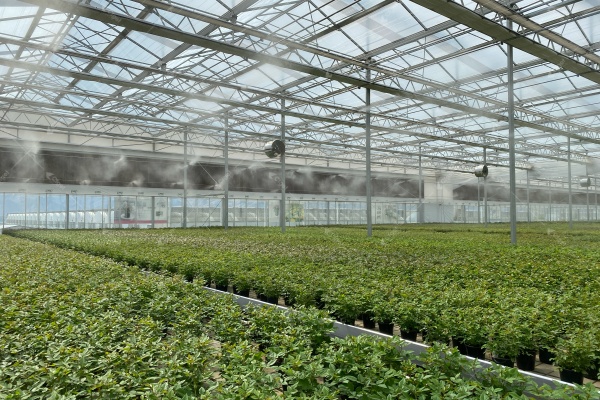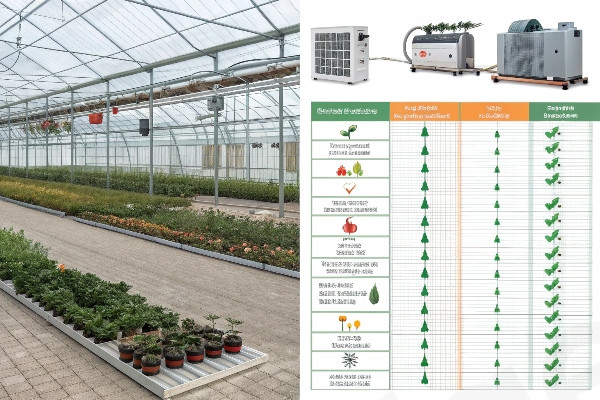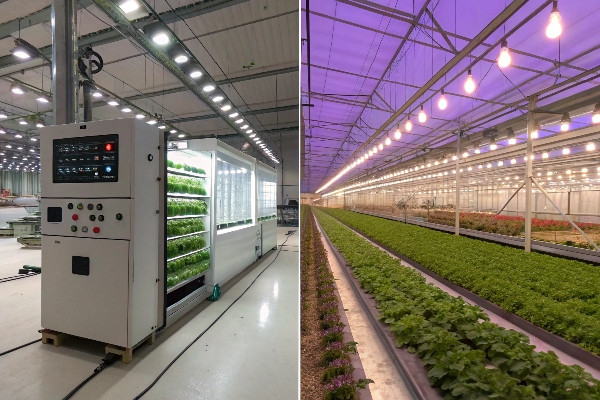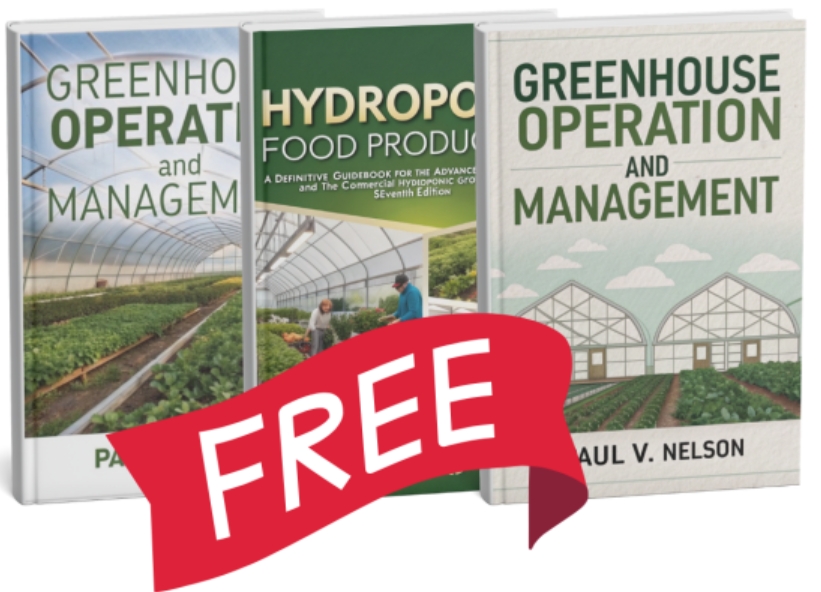Facing Malaysia’s intense heat and humidity? These conditions can ruin crops and slash profits. Our custom solution turns this challenge into a high-yield advantage for growers.
We built a successful Malaysian smart greenhouse by focusing on a climate-specific design. This involved advanced ventilation, dehumidification systems, and durable, corrosion-resistant materials to master the tropical environment and guarantee consistent, high-quality yields for our client.
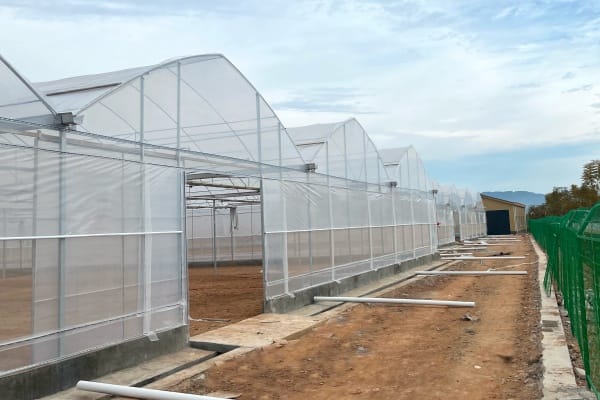
Our custom-designed greenhouse thriving in the Malaysian climate.
This project was more than just a construction job; it was a partnership from start to finish. We worked closely with our Malaysian client to understand their unique goals and the specific environmental challenges they faced every day. Building a greenhouse that can not only survive but also excel in a tropical climate requires a deep understanding of the local conditions. The biggest hurdle we had to overcome was the climate itself, a combination of intense heat and overwhelming humidity. Let’s explore how we tackled this head-on.
Why is climate control so crucial for Malaysian farms?
High humidity breeds fungus and disease, devastating your crops. Uncontrolled heat stresses plants and stunts their growth. This leads to unpredictable harvests and significant lost income for any grower.
In Malaysia, precise climate control is essential to prevent fungal diseases and heat stress. Our systems actively manage humidity and temperature, creating a stable, optimized environment where crops can thrive year-round, free from the threats of the tropical climate.
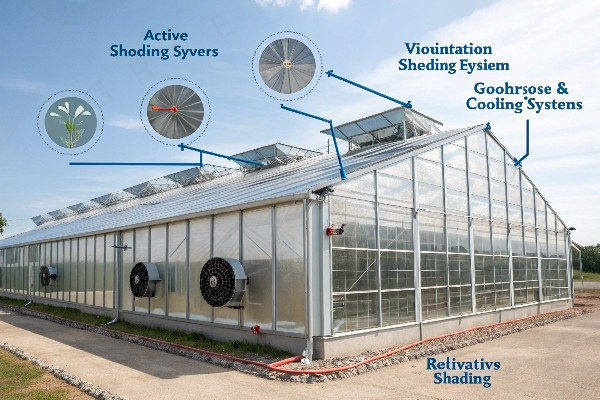
Our fogging system cools the air without wetting plants.
To achieve success in a Malaysian smart greenhouse, you cannot simply install a standard model. You must engineer a solution specifically for the environment. For this project, we knew that managing the atmosphere inside the greenhouse was the number one priority. Our 29 years of experience have taught us that fighting nature is a losing battle; you have to work with it. We designed a multi-faceted climate control system that addresses both humidity and heat with precision, ensuring the client’s high-value crops were protected and productive.
Taming the Humidity
In Malaysia, the relative humidity can stay above 90% for long periods. This creates a perfect breeding ground for destructive fungal pathogens like downy mildew and botrytis, which can wipe out an entire crop in days. Our first line of defense was to engineer superior airflow. We designed the greenhouse with large, automated vents on the roof and sides to encourage natural convection, allowing hot, humid air to escape. When natural airflow isn’t enough, powerful exhaust fans activate to actively pull damp air out of the structure. For ultimate control, we integrated a high-pressure fogging system. This system releases microscopic water droplets that evaporate instantly, a process called "flash evaporation." This cools the air significantly without adding any moisture to the plant surfaces, effectively lowering the temperature and humidity at the same time.
Beating the Heat
Along with humidity, intense solar radiation and high ambient temperatures pose a constant threat to plant health. To manage this, we used a multi-layered strategy. The first layer is an automated shading system. These retractable screens deploy during the hottest parts of the day to block a percentage of the intense sunlight, preventing the plants from getting scorched and reducing the heat load inside the greenhouse. The second layer is the powerful ventilation and fogging system we just discussed, which actively removes and cools hot air. Finally, the choice of covering material, in this case, a high-quality polycarbonate, provides excellent light diffusion. This scatters the light, allowing it to penetrate deeper into the plant canopy without creating hot spots. This combination keeps the internal temperature within the optimal range for photosynthesis, preventing heat stress and ensuring the plants can grow at their maximum potential.
How did we ensure the greenhouse structure would last?
Are you worried about rust and decay in Malaysia’s constantly wet climate? A weak structure can corrode quickly or fail under heavy rain, leading to a total loss of your investment.
We ensured longevity by using high-quality, hot-dip galvanized steel for the entire frame. This process provides a thick, protective zinc coating that resists corrosion for decades, even in Malaysia’s constant humidity and heavy rainfall, securing the client’s investment.

Our galvanized steel frame is built to last.
A sophisticated climate control system is useless if the building housing it falls apart. The structural integrity of the greenhouse is the foundation of the entire investment. In a tropical climate like Malaysia’s, the two biggest enemies of any steel structure are corrosion from humidity and the physical stress from torrential monsoon rains. We knew from the beginning that we had to over-engineer the structure to guarantee its long-term performance and give our client peace of mind. We relied on our proven materials and design principles that we have refined over nearly three decades of building in challenging environments around the world.
The Power of Hot-Dip Galvanization
Standard steel or even painted steel would begin to show signs of rust within a year or two in Malaysia. That is simply not acceptable. For all our projects in humid regions, we use steel that has undergone a hot-dip galvanization process. This is not just a coating; it is a metallurgical transformation. We take the fabricated steel components and immerse them completely in a vat of molten zinc at around 450°C. This creates a series of zinc-iron alloy layers, topped by a pure zinc layer, that are bonded to the steel. This multi-layered protection is incredibly durable and resists corrosion from all sides. Even if the surface gets a deep scratch, the surrounding zinc acts as a "sacrificial anode" to protect the exposed steel from rusting. This is the gold standard for corrosion protection and ensures the frame will last for decades.
Designing for Tropical Downpours
Malaysia is known for its intense monsoon season, which brings torrential rainfall. A standard greenhouse design would quickly be overwhelmed. Our engineering team designed the roof with a specific steep pitch to ensure water sheds off quickly and does not pool. The guttering system is a critical component; we designed and installed an oversized system capable of channeling huge volumes of water away from the structure safely. This prevents overflows that could damage the foundation, erode the surrounding land, or flood the interior of the greenhouse. Furthermore, the entire structure, from the foundation footings to the roof trusses, was calculated to withstand the high wind loads associated with tropical storms, ensuring the complete safety of the crops and personnel inside.
What technology drives the Malaysian smart farm’s success?
Manually managing a large commercial greenhouse is inefficient and prone to error. Relying on guesswork for irrigation and climate control leads to wasted water, fertilizer, and energy, directly hurting your bottom line.
The farm’s success is driven by our integrated environmental control system. A network of sensors monitors key conditions in real-time, and a central computer automatically adjusts ventilation, fogging, and irrigation for optimal growth with minimal labor.

Real-time data puts total control at your fingertips.
The true "smart" aspect of this greenhouse lies in its automation. The robust structure and climate hardware are the body, but the technology is the brain. This system works 24/7 to create the perfect growing environment, responding to changes faster and more accurately than any human team could. For our client in Malaysia, this meant they could produce consistent, high-quality crops cycle after cycle, regardless of the weather outside. It also dramatically reduced their operational costs for labor, water, and energy, which is key to achieving long-term profitability.
The Central Nervous System: Sensors and a Controller
The foundation of the automation is a network of high-precision sensors placed strategically throughout the greenhouse. These sensors are the ‘nerve endings’ of the system, constantly collecting data. They measure ambient temperature, relative humidity, the CO2 concentration in the air, and Photosynthetically Active Radiation (PAR), which is the specific spectrum of light that plants use for photosynthesis. All this data is sent in real-time to the central control unit. This controller is the ‘brain’ that we help the client program with the ideal environmental parameters for their specific crops. It is not just about keeping things from getting too hot or too humid; it is about maintaining the perfect conditions for every stage of plant growth.
Automated Actions for Precision Growth
Based on the live data from the sensors, the controller makes intelligent decisions automatically. If the humidity starts to creep above the setpoint, the controller will first open the roof vents. If that is not enough, it will activate the exhaust fans. If the temperature climbs too high, it will deploy the shade screens and turn on the high-pressure fogging system. One of the most critical automated systems is the precision irrigation. Instead of watering on a simple timer, drip irrigation lines deliver water and nutrients directly to the root zone of each plant. The system makes irrigation decisions based on data from soil moisture sensors and environmental conditions, ensuring plants get exactly what they need, when they need it. This method saves enormous amounts of water and prevents the soil from becoming waterlogged, which further helps reduce overall humidity and disease pressure.
Conclusion
Our Malaysian project proves that with the right climate-specific design, durable materials, and smart technology, tropical farming challenges can be overcome. We delivered a durable, efficient, and highly productive smart greenhouse, creating a successful model for modern agriculture.
